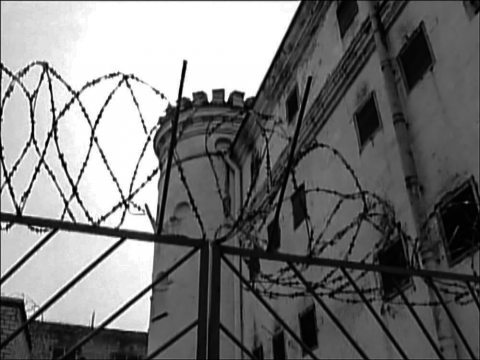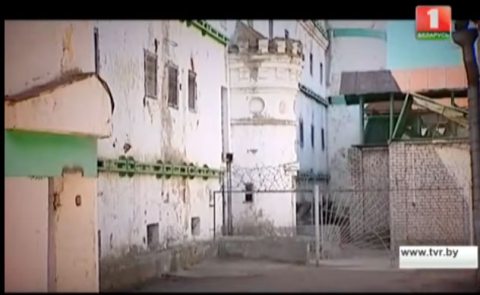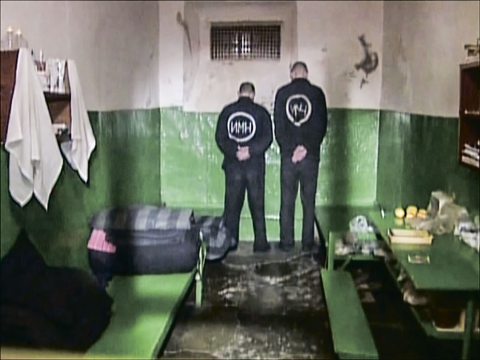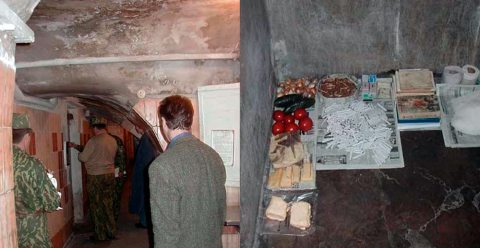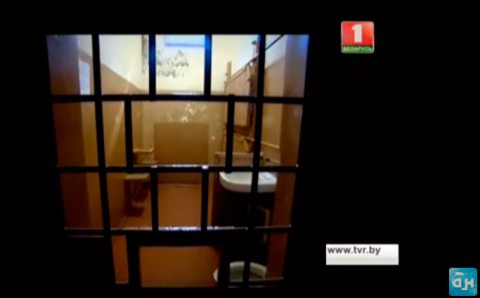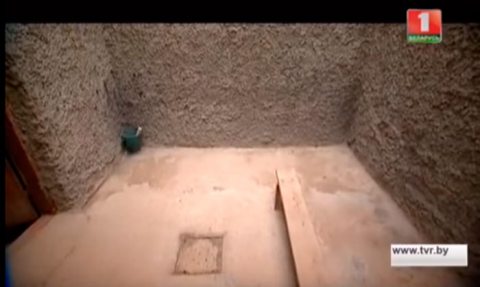Death Row Secrets. Part 1
The topic of the death penalty is still a dark secret in Belarus. The public knows very little about the conditions of those held on death row. We only know that after the verdict they are for a while imprisoned in a jail in the center of Minsk. Therefore, human rights defenders are always trying to glean the necessary information. Representatives of the campaign “Human Rights Defenders against the Death Penalty in Belarus” have gathered memories and testimonies of former prison staff and former inmates, their family members, part of which has been used to prepare this publication. For obvious reasons, these people asked not to disclose their names.
Death convict’s last refuge
Jail No. 1, also known as Valadarka, which is home to those awaiting execution, is located in the building of what used to be the Piščala Castle. A detailed description of the place can be found in Slavamir Antanovich’s book Prisoners of the Piščala Castle. Earlier, death convicts were held on the ground floor of the old castle. One can still see special low windows. Now the door to this part of the castle is locked, and the phase is closed. It is noteworthy that the rare photos of the Piščala Castle, which are open to the public, display this part of the castle. One can see the cells, each of them is designed for two inmates, and the walls are dark green. This is what death row used to look like.
A repeat offender M, who has many times been in this jail, is emotional about his mental state after he saw the prison’s death row:
“In the old death row, where I was at the time it was run by Alkayeu, and after it, the atmosphere is grimmer. There was a feeling that it wouldn’t be surprising if the door were opened by Stalin himself. The atmosphere is so saturated with emotions of death that one can nearly sense the presence of a metaphysical gate to hell.”
However, the cells are no longer used to hold the death convicts. It is here that the investigators interrogate the prisoners. The old building also has a yard where the inmates are taken out for walks. To reach the yard, the prisoners have to walk underground. Only female prisoners can see the daylight when crossing the yard.
The new building, which holds untried prisoners and death convicts, is located on the site of a former stable, part of which now has an additional storey.
Testimony by one of the prison staff:
“The new building has three cells for death convicts. They have the following numbers: 102,103 and 104. The dimensions of the cells, like most in Valadarka, are 6 to 3 meters. All of them are equipped with video surveillance devices to continuously monitor the inmates. This is the only place in Valadarka, where surveillance cameras are located inside the cells. The other cameras are installed only in the corridors. At any time of the day or night death row is guarded by a sentry that follows the screen.
What do the new cells look like? Two-thirds of the walls are painted beige, and the ceiling and the upper part of the walls are white.
The toilet is like in trains, a pocket, the fence is shoulder-high, but the camera shows only part of the body. Next to it is the sink.
The ceiling, which is about 5 meters high, has a light bulb. The light is always the same, it’s white and is always on. The electrical sockets on death row are turned off at specified times. There is a radio that is on all day long.
The bench and table are welded to the floor. Above the table, there is a shelf with their letters and the case file. The berth is very low, about 15 cm from the floor.
Personal items, hygiene products, books, and allowed things are stored in a common locker in the hallway. If a death convict wants to read a book or smoke a cigarette, he should ask the guard who will give them the cigarettes or books through a special hole in the door.
The cells are always warm, because of a nearby boiler. This is the easiest way to escape from but the prisoners do not know about it. It’s the oldest building, raw and damp. One should just kick the wall and it seems that these walls will collapse.
The death convicts’ names and criminal articles are written on the door.”
Here’s an interesting reflection on the beige color of the walls by a person named S, who used to be held there and even wrote to the prison psychiatrist about this:
“Please examine and express your opinions about the impact on the psychological state of a person created by the color in an enclosed space, comprising 50% of beige with a bright yellow accent, 40% of white and 10% of gray.”
Another witness named K describes in detail the windows on death row:
“From the inside the windows has narrow-meshed bars preventing the prisoners from reaching the window. Behind the glass are the so-called ‘eyelashes’ (sun blinds that cover the bottom part of the window and only allow the prisoner to see the sky) that are covered with fine-meshed netting from the outside. The dim light coming from the window allows the prisoners to tell whether it’s day or night. The windows of these cells overlook the Piščala Castle.”
When the door opens...
Death row prisoners are subject to maximum-security rules and restrictions associated with them.
Testimony by a former employee of the detention center:
“From the very beginning, they face maximum security restrictions. It’s not written down, but in fact it’s exactly the same. They receive a strip [a special label] in their case files: inclined to escape, attacks on the administration, committing suicide. Because of this, the attention to them is immense. The rules prohibit them to lie or sit on the berths from 6 am to 10 pm. They usually walk around the cell all day long. The death convicts have to wear special clothes. When they sleep, they should keep their hands above the blanket, no matter what their position is: on their back or on their stomach.
Death convicts are never taken out for a walk. This is prohibited by the law. Yet, there is a small yard in the new building. The death convicts are usually brought there after lunch for a while, because at that time the walls in their cells are checked with wooden mallets. Sometimes, they can be locked in the shower, but most often they are kept in the yard. Each time a death convict leaves the cell, for example, to go to another building, there’s additional guarding by dogs. This requires the presence or an order by the facility head."
In accordance with the rules, each move is subject to the same restrictions faced by life-term prisoners – all those under maximum-security rules. They must hold their hands above the head, as they are escorted with their heads down.
The doors in these cells are beige and have a peephole and a small window to serve meals. The door is opened only in the presence of the facility head or his deputy. It is very rarely that someone other than the chief of the detention center is present at the opening of the door.”
This evidence is confirmed by the former head of the detention center Aleh Alkayeu in an interview for the campaign “Human Rights defenders against the Death Penalty in Belarus”.
“In order to open the door to death row, one has to invite the prison chief. The cell cannot be opened without his order. No one was ever beaten in the presence of the chief. The chief, it's me. To take the prisoner out of the cell, an order from the chief is required. At all other times, they only open the small window. You can’t beat or kill anyone through the window. The cell is also opened during inspections: the controllers check it with wooden mallets and batons. It happened every day from 1 to 2 pm on the orders of the chief. The door is opened to take them out to the bathroom, as well as for the execution of the sentence, they are also sometimes escorted to see a visitor. They know about the meetings, as a rule; they are notified beforehand that the meeting will take place; they also write to their lawyers. And all the other procedures that are prohibited by the rules terrify them.”
In 1998, human rights defenders of Viasna received letters of Ivan Famin that were written on death row and left the prison walls through ‘prison-mail’. It also describes in some detail the conditions of detention on death row: “It’s pure hell in here... They beat me for everything... They beat me for writing to the prison hospital and to the priest so that he could come to confession. And they beat me for nothing, if they are in a bad mood.”
Meals on death row is no different from those served to other prisoners. The dishes are passed through a small window by a guard. All dishes are made of orange plastic, just like the cups and the spoons. The prisoners have to wash the dishes themselves. Between the meals, the dishes are stored on a special shelf in the hallway near the sentry.
